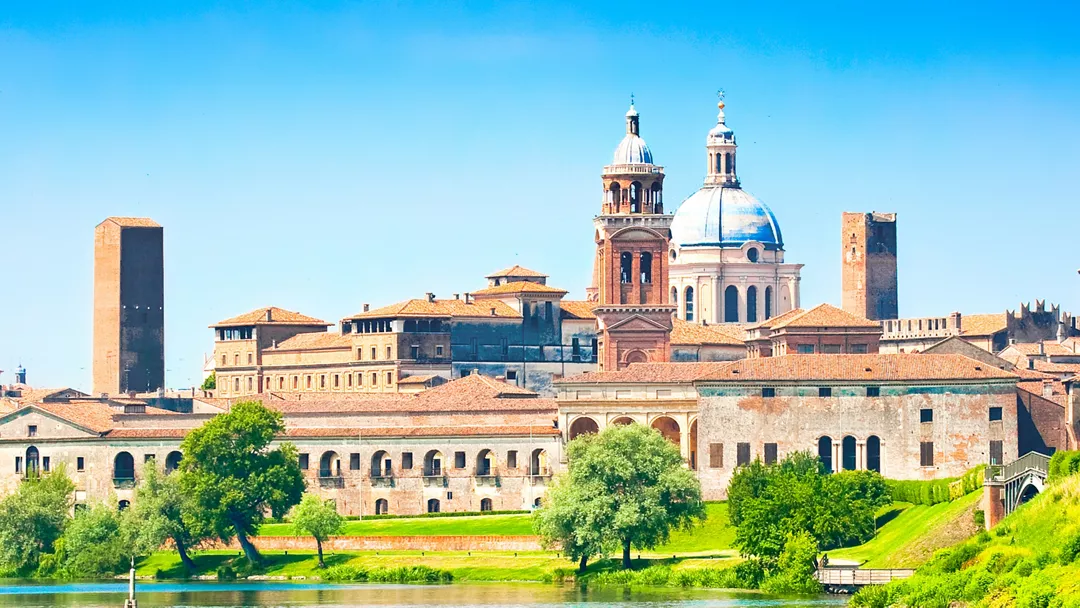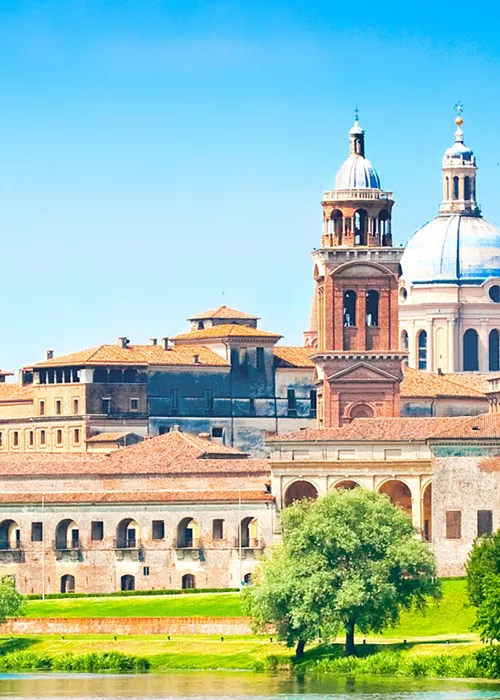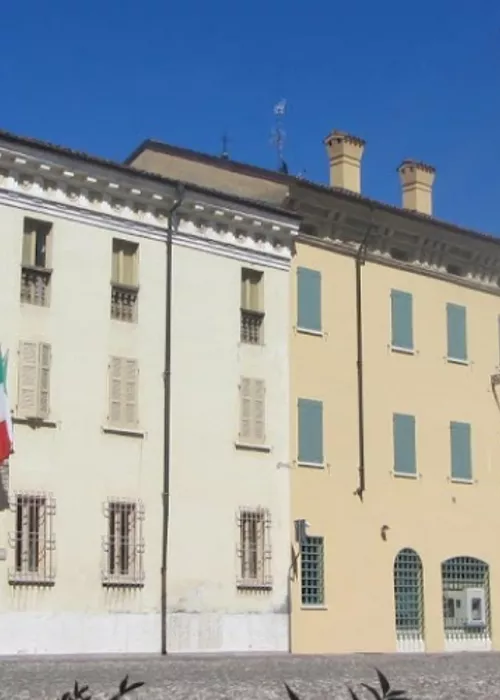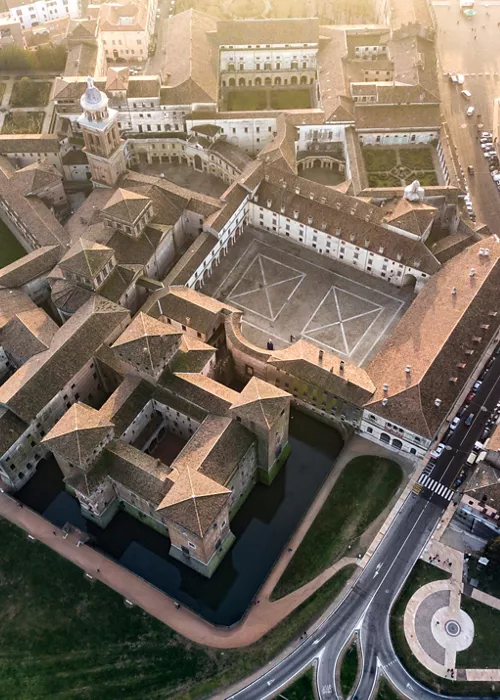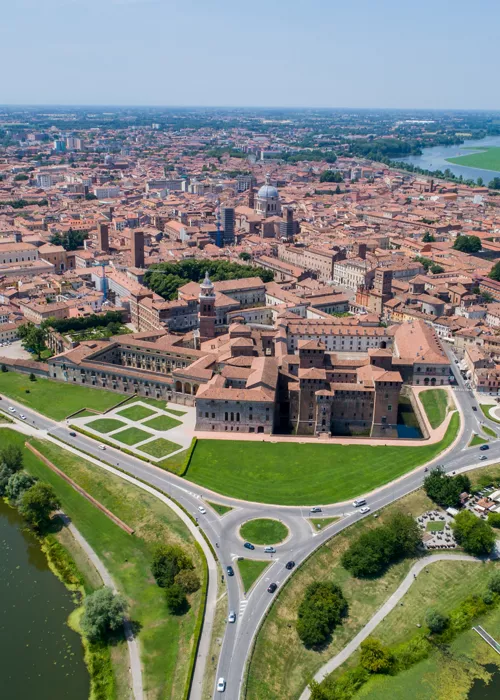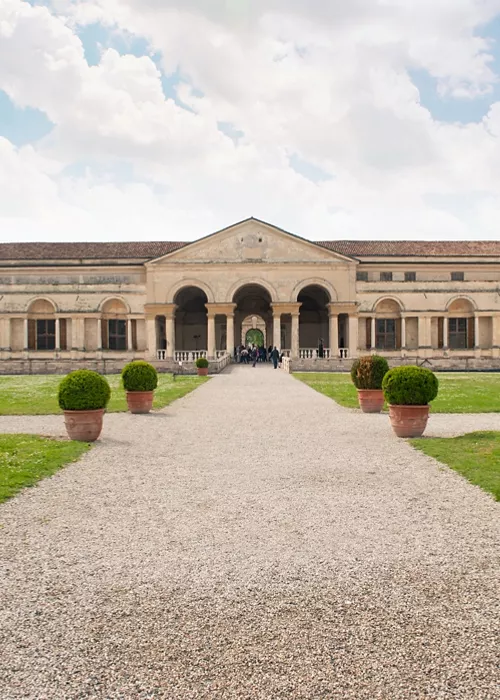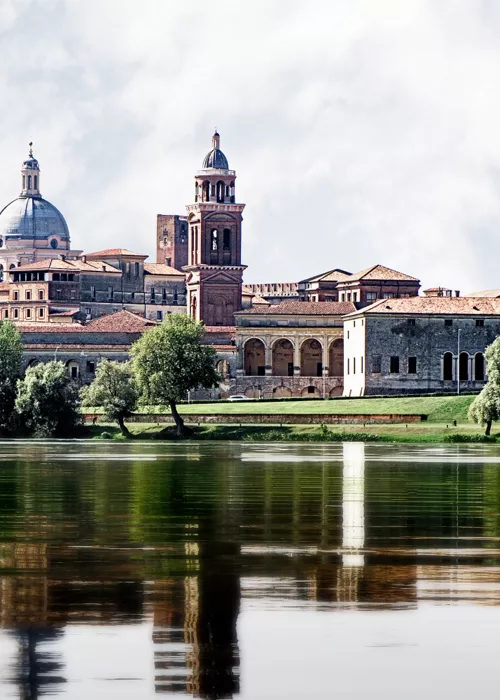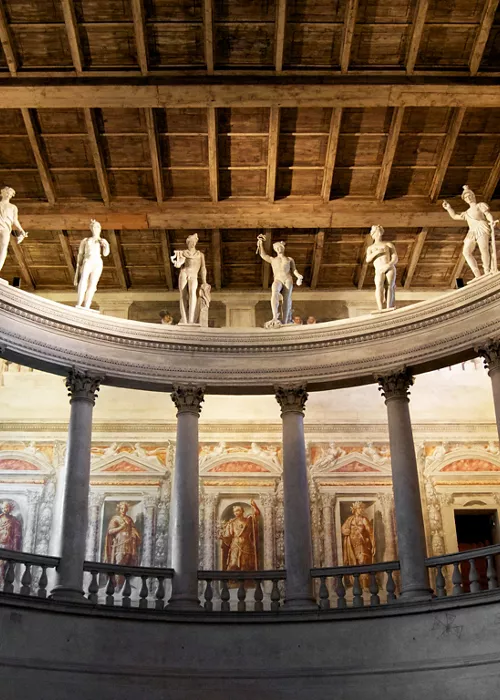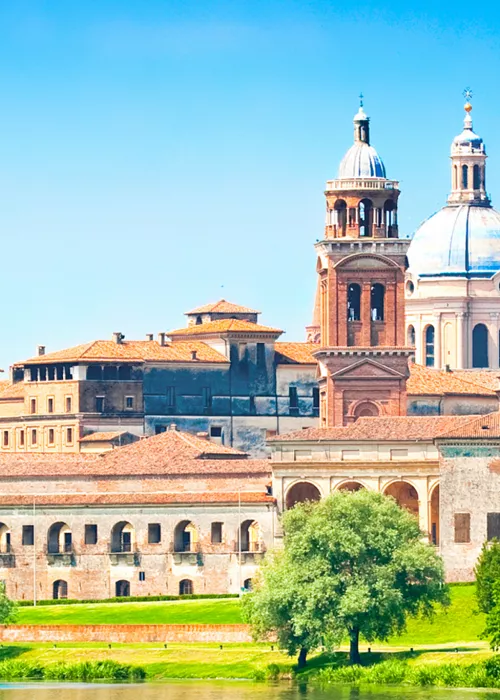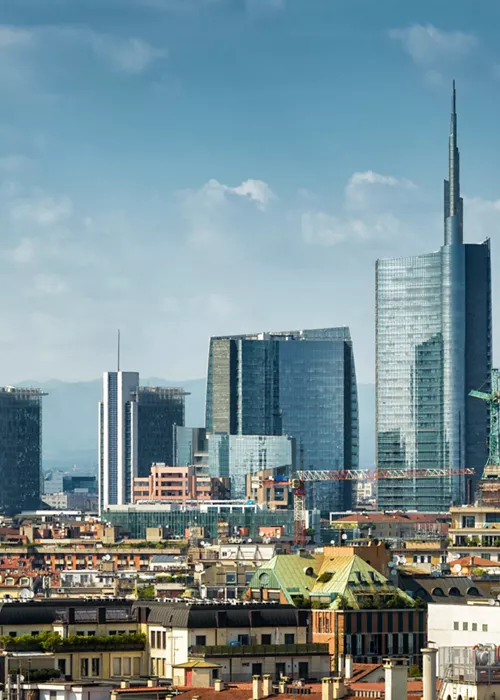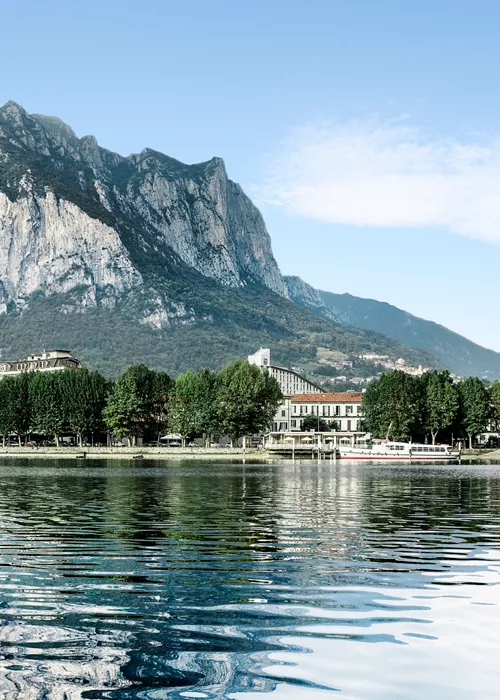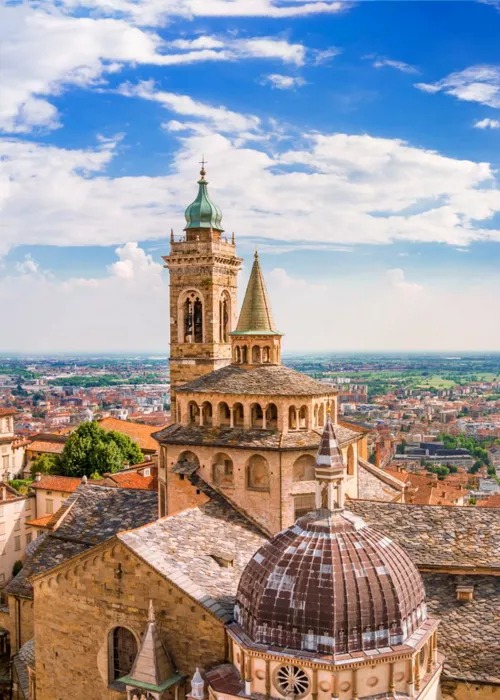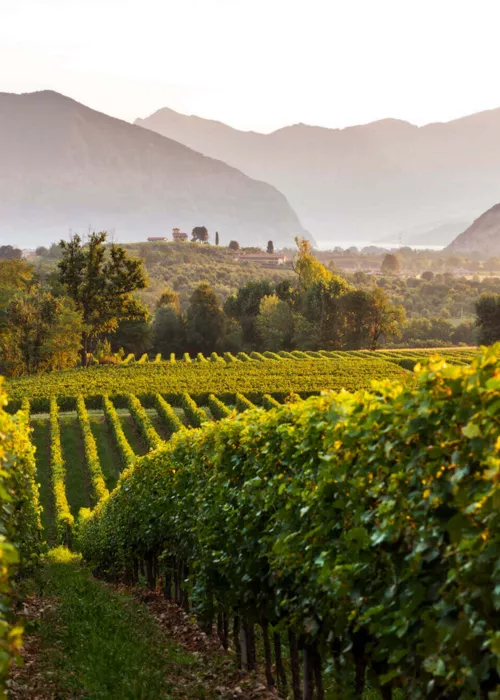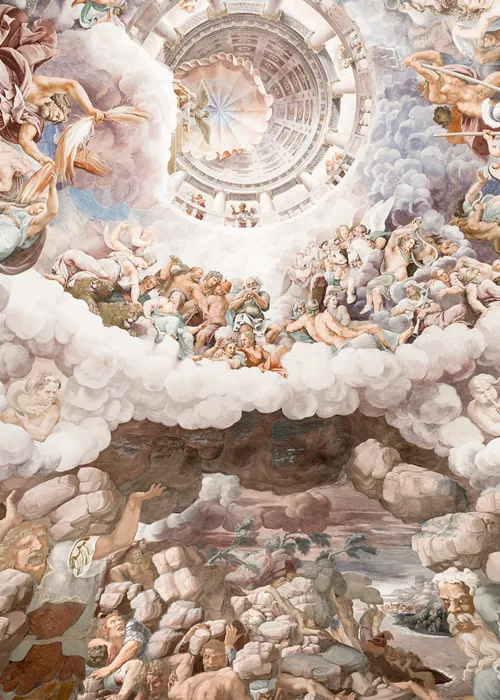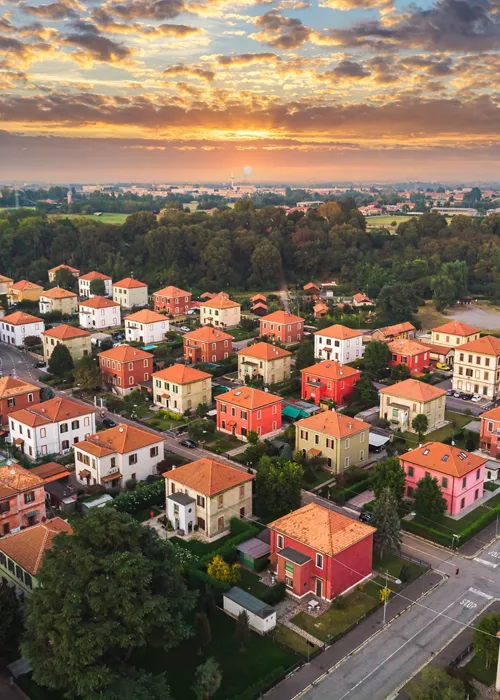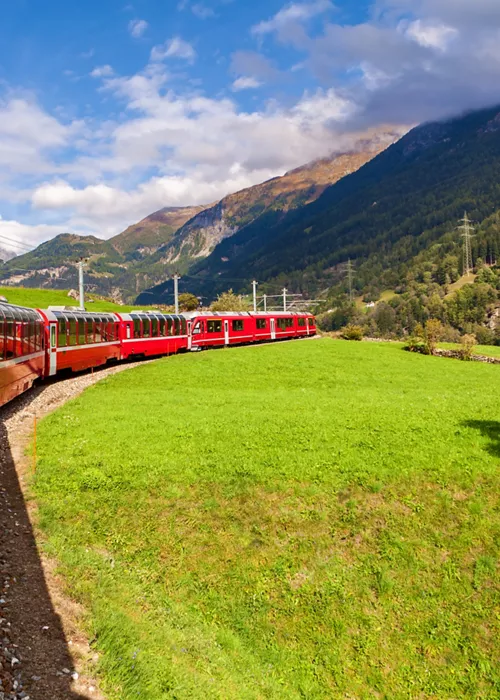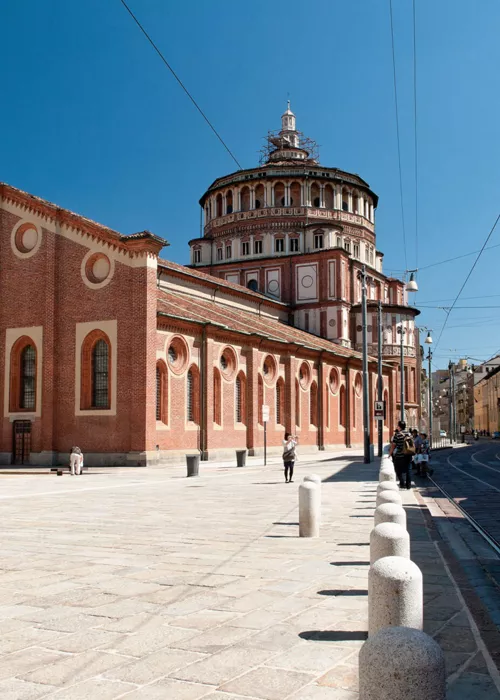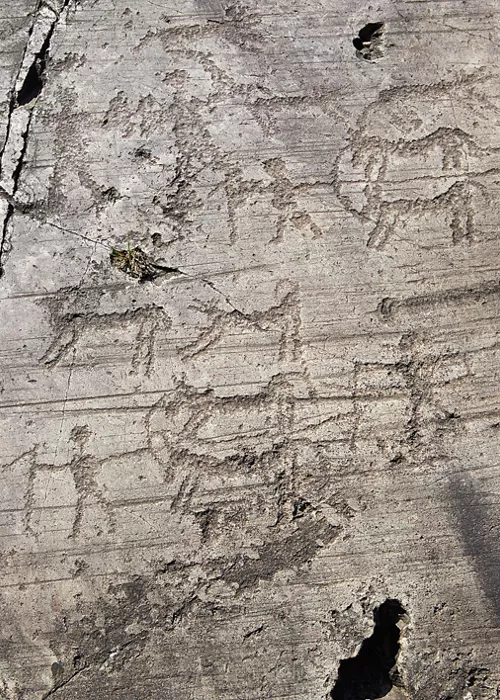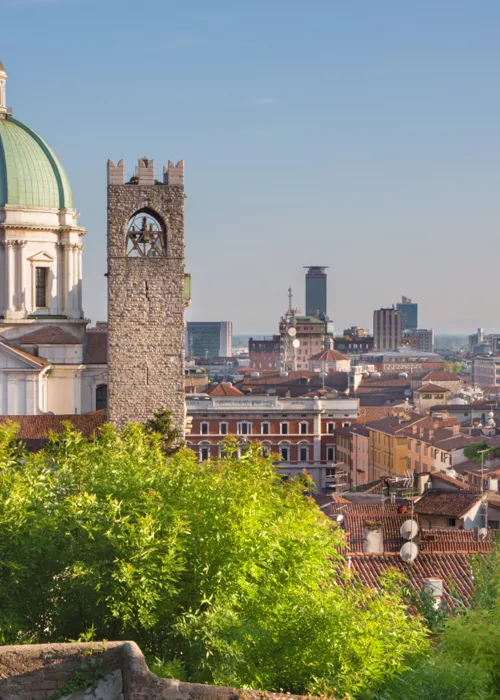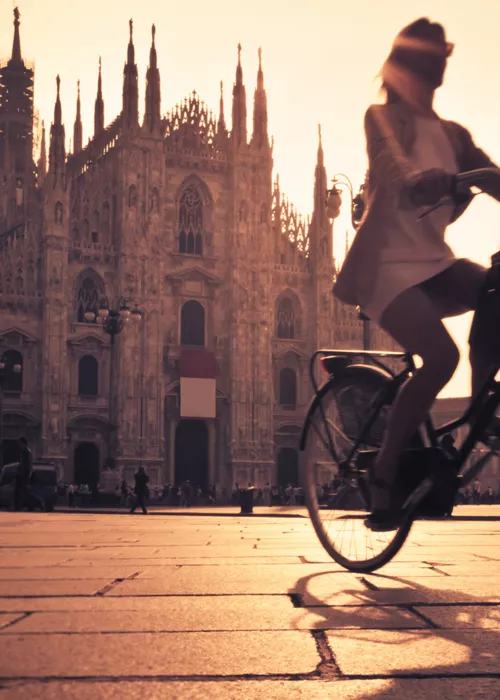Mantua and Sabbioneta, the pearls of the Po Valley
5 minutes
Rich in charm, art and history, Mantua and Sabbioneta are two beautiful cities in the heart of the Po Valley: what do they have in common? The presence of the Gonzagas transformed them into magnificent centres of the Italian and European Renaissance.
Mantua and Sabbioneta: where to find them
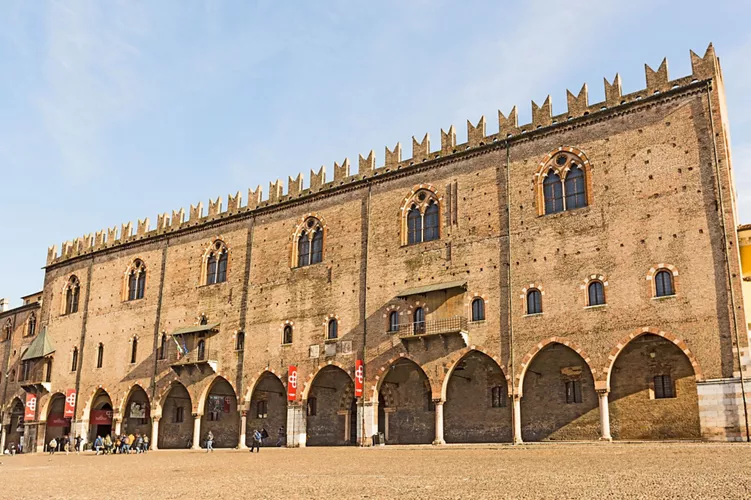
Mantua and Sabbioneta are located just a few kilometres apart in one of the most verdant areas of the Po Valley in south-eastern Lombardy. Mantua, a true embodiment of the evolutionary model of the city of Renaissance Italy, steadily renewed between the 15th and 16th centuries, it stands on the banks of the three basins fed by the River Mincio.
Sabbioneta, and its picturesque historical centre, are located a little further south, along the route of the ancient Via Vitelliana between the Po and Oglio rivers. The city, considered one of the most beautiful villages in Italy, owes all its splendour to the Gonzaga family who founded it in this strategic position, making it one of the reference models of the ideal city proposed by Humanism.
History and information on Mantua and Sabbioneta
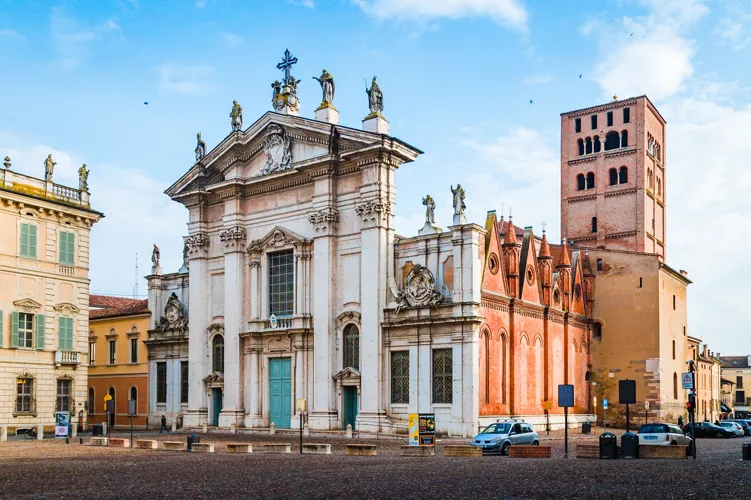
Mantua's history begins with the expansion of the Etruscans from 750 BC, but to reach the city's period of maximum splendour, we have to wait until the beginning of the 14th century with the Gonzaga family, who ruled there for almost 4 centuries until 1707. Particularly important was the figure of Ludovico III Gonzaga who called the most influential artists of the period such as Leon Battista Alberti and Andrea Mantegna to the court of Mantua. The same was done a few years later by Federico II Gonzaga, who invited the architect and painter Giulio Romano to the city and helped change the face of Mantua forever.
It is in this period that the history of Sabbioneta, inextricably linked to Vespasiano I Gonzaga, begins. It was he who founded the city in 1556 and designed it on the concept of the ideal Renaissance city: over the course of 35 years, until his death, Vespasiano dedicated himself to the splendour of Sabbioneta, becoming its first and only duke.
Why they are a UNESCO site
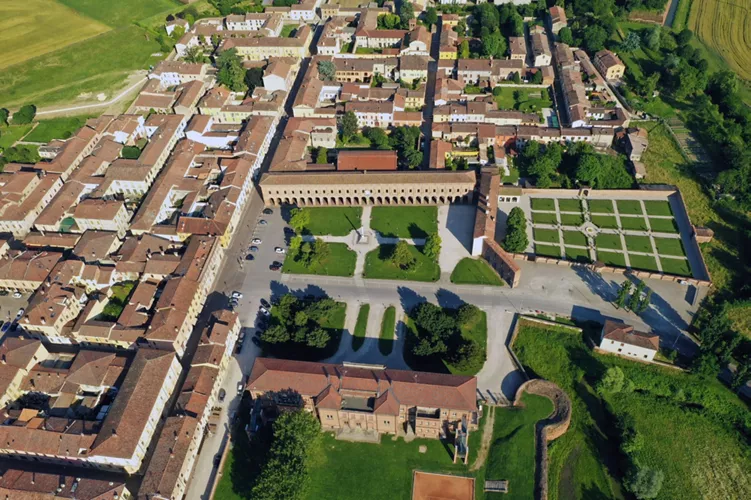
Mantua and Sabbioneta, exceptional testimonies of the exchange of influences of Humanism and Renaissance culture, have been part of the UNESCO World Heritage since 2008.
Two sides of the same coin, two examples of Renaissance cities whose importance, according to UNESCO, derives from the architecture, monumental art and town planning, sustained over the centuries by the Gonzaga family, which contributed to the spread of Renaissance culture inside and outside Europe.
The most beautiful places to visit in Mantua:
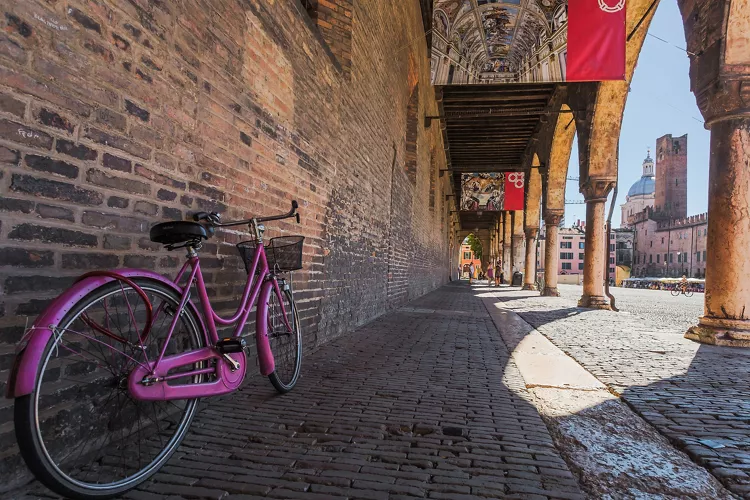
An historical centre that is a treasure chest, with jewels that recall the splendour of Renaissance Mantua and the Gonzaga family in every corner. Start in the old centre with the large Piazza Sordello, where the city's most important buildings face.
Palazzo Ducale, the main residence of the Gonzaga family, is a true palace-city with more than 500 rooms built over the centuries by the various members of the family. The structure incorporates the 14th-century Castle of San Giorgio, inside which is the most famous room in the entire Ducal Palace, the Bridal Chamber, frescoed between 1465 and 1474 by Mantegna and considered one of the masterpieces of 15th-century Italian painting.
Opposite the entrance to the Palace stands the Cathedral of Mantua, rebuilt in the Middle Ages and enlarged in the early 15th century by Giulio Romano at the behest of Francesco I Gonzaga. Overlooking it, with its Ghibelline battlements still intact, is Palazzo Castiglioni dominated by the Torre della Gabbia, a symbol of the power of the Bonacolsi who ruled the city before the Gonzagas.
Walk a few metres to reach Piazza delle Erbe dominated by the Clock Tower, built in 1472 by Luca Fancelli at the request of Ludovico II Gonzaga. The first thing you will notice is the clock with Roman numerals, zodiac signs, planetary hours and the days of the Moon. Enter the Time Museum inside the Tower to discover all its secrets and view the city from a unique position. The Rotonda di San Lorenzo, one of the oldest buildings in Mantua, is next door.
In the eastern part of the city, surrounded by greenery, is Palazzo Te, a grandiose villa commissioned in 1525 by Federico II Gonzaga to Giulio Romano, who also carried out the rich interior decoration, starting with the sumptuous Hall of Cupid and Psyche, which you cannot miss. A stone's throw away are two places in Mantua not to be missed: the Casa del Mantegna, home of the painter from his arrival in the city until his death, and the Temple of San Sebastiano, designed by Leon Battista Alberti.
The most beautiful places to visit in Sabbioneta
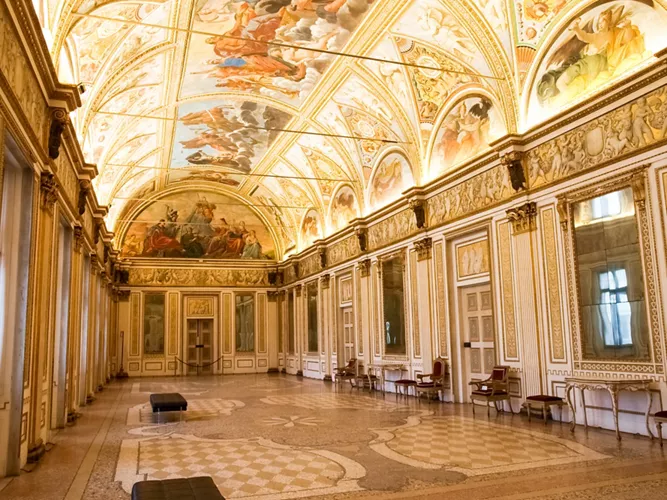
Sabbioneta is a small town where all the most beautiful things to see are concentrated in the delightful historical centre surrounded by the walls built in 1554.
The Teatro all'Antica, designed by Vincenzo Scamozzi and inspired by the Olympic Theatre in Vicenza, will impress you with its splendid loggia consisting of a colonnade surmounted by statues of the Olympian gods. Around the corner, visit the Ducal Palace where Vespasiano Gonzaga lived and the austere Church of the Beata Vergine Incoronata where the Duke's mausoleum tomb is located.
On the opposite side of town, a four-minute walk away, are the Garden Palace, designed by the duke as a place for his private life, and the Gallery of Antiquaries. Here, in its 97-metre length, Vespasian kept his collection of ancient marbles, now housed in the Ducal Palace in Mantua.
Typical products and dishes Mantua and Sabbioneta
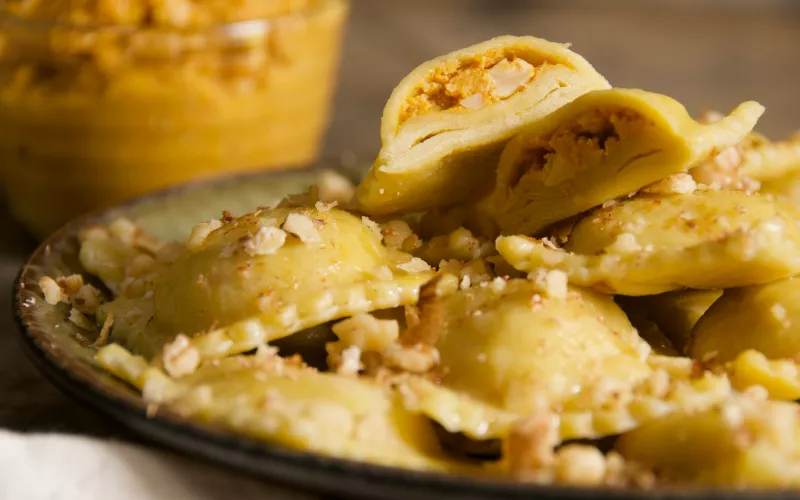
Mantua and Sabbioneta will also amaze you with their food and wine traditions. Take a break during your visit and taste the pumpkin tortelli, strictly handmade with a sweet pumpkin filling combined with the spicy flavour of mostarda di Mantova, while sipping a glass of Lambrusco.
If you are still not full, choose between donkey stew accompanied by the ubiquitous corn polenta or the highly celebrated Mantuan cotechino. If you want to end on a gluttonous note, try the Sbrisolona cake: you will not find a trattoria or restaurant that does not offer this delicious cake born in Mantua.

